Chronologies and king lists of various kinds have always existed. Down through history rulers, kings and pharaohs have written their accounts on scrolls, clay tablets, temple walls and parchments. As dynasties rose and fell, these lists were sometimes lost or forgotten. As kingdoms crumbled and disappeared, so did many of their king-lists.
In ancient times people had difficulties keeping track of the passing of time. Some people would remember that they were born the year after the great drought, or perhaps two years after a particular battle. These oral accounts usually only lasted a couple of generations before becoming confused and forgotten.
In well organized societies, people kept track of years according to the year of the ruler. “In the year that King Uzziah died…” writes Isaiah, the ancient prophet. Ancient historians then used a list of kings to keep track of events over the years. But this was more complex that it seems. Calendars were not readily available to the masses. Usually priests and temple workers kept track of calendar years. They would use the spring and fall equinoxes (shortest and longest days) to mark the year. Other societies used the phases of the moon to mark the months. Thus, most calendars were built around lunar events rather than solar events.
So for many centuries the world’s collective history was relatively unknown. Locally there were individual and separate chronologies of various kingdoms. For instance, there were chronologies of Greece, chronologies of some of the ancient Egyptian kingdoms, and chronologies of the rulers of ancient Babylon. The best known chronology was probably that of the Jewish people, found in the pages of the Bible. Now, imagine these chronologies being writing as lists on various pieces of paper. Most of them are simply lists of king’s names, few have any years written for how long the king lived. From there events in that particular kingdom are tied to the years of kings, something like “in the second year of King XXX.”
Chronology makers face two problems: First they do not know how long the lists should be. Some kings might reign for 2 years, some for 20 and some for 40. Sometimes two kings might rule at the same time, in different parts of the kingdom. Sometimes they jointly ruled, such as father and son, or two brothers. If the ancient writers did not tell us the length of their reigns, or if two reigned at the same time, then we have no idea how long a period the chronology spreads over, nor if any kings are missing, nor if any of them ruled simultaneously.
The second problem chronology makers have is that they do not know how to match up the various lists. Therefore they must look for events that influenced two or more kingdoms at the same time. Battles between two kingdoms are very important as these provide solid links between the two chronologies. Explorers and merchant trade are important, since their accounts describe other kingdoms, and may help establish links. For example, Chinese explores visited Rome in the first and second century AD. Envoys were sent from Rome to China soon after. Eclipses are important, because they were witnessed by people in a wider area, although most eclipses were viewed only locally. But they might have affected several kingdoms. Added to this, if an ancient writer mentioned an eclipse, this could be useful in establishing an exact date, as chronology makers can use computer simulations to back-track eclipses and record when they might have happened. Catastrophes are important, if they affected more than one kingdom. They are also important, in that they may have affected the spin and tilt of the earth, thus negating calculations about eclipses. For example, on Boxing Day in 2004 an Asian earthquake and resulting tsunami caused a shift of mass towards the Earths center, causing the planet to move faster and tilted its axis at the poles by 2.5 centimeters. (Richard Gross, NASA Jet Propulsion Laboratory).
So the problems of developing an accurate worldwide chronology and timeline are huge. In actuality true chronologies were not tackled until the time of the Roman Empire, when writers and historians could begin to collect data from various civilizations and piece them together.
A History of Chronologies
The first writer we know of who showed a keen interest in dating events was the ancient Greek writer, Ephorus (504-330BC). Unfortunately only a few fragments of his work survive.
Theophilus of Antioch (AD 115-180) also produced a brief chronology of the Bible. Theophilus was born a pagan, not far from the Tigris and Euphrates rivers. He later embraced Christianity after studying the Holy Scriptures. In his three volume Apologia ad Autolycum, he set out to convince a pagan friend, Autolycus, of the divine authority of the Christian religion His arguments were drawn almost entirely from the Old Testament and were filled with chronological references.
Julius Africanus (160-240 AD) (Sextus Iulius Africanus) is often called the first true chronologist and the father of Biblical history. Little is known of his life. His name tells us he was an African, while some such as Gelzer considered him as being of Roman descent. (Gelzer “S. Julius Africanus”, pp. 4, 5) Julius was fluent in Greek, Latin, and Hebrew. He was originally a pagan and a soldier but converted to Christianity before he wrote all his works. Some time around 215 AD he moved to Alexandria to study, possibly attracted by the fame of its schools. Unfortunately, all the dates of his life are uncertain. One tradition places him around the time of Emperor Gordianus (238-244; Gelzer, p. 7), another mentions him under Alexander Severus (222-235; id., p. 6). He appears to have known Abgar VIII, the Christian King of Edessa (176-213).
Julius Africanus wrote the “Chronicle” (Gk. Chronographiai) as a five volume set covering the time from the Creation (B.C. 5499 in his calculation) to the third year of Eliogabalus (A.D. 221). His chronology made an attempt to combine the Biblical account with the secular Roman and Greek history. The third volume onward focused exclusively on his chronology. Julius used as sources first the Bible, then Greek, Roman, and Jewish historians, especially Justus of Tiberias, who depended on Josephus. He was also influenced by the “Stromata” of Clement of Alexandria (Gelzer, 19-24).
Julius Africanus used a dating system based on dates starting with Abraham. Each of his dates bore the label “in the year of Abraham.” Today only fragments of his entire five-volume Chronography exist. Copies of this can be downloaded from various websites.
Julius’ chronology is of great importance as it is the first Christian attempt at a universal history, and it soon became the source of later Christian chronography. Eusebius made it the foundation of his own chronicle and it became the source of all later Byzantine writings of history, so that for centuries afterward the Christian world accepted the dates and epochs calculated by Julius.
As we mentioned above, Eusebius followed Julius with his own chronology. Eusebius Pamphili was born around 260 AD. He became the Bishop of Cæsarea in Palestine and is known as the “Father of Church History.” His chronology of world history (Chronography) was divided into five parts: (1) the history of the Chaldeans, and the Assyrians, followed by lists of the Assyrian, Median, Lydian, and Persian kings; (2) Old Testament history; (3) Egyptian history; (4) Grecian history; and (5) Roman history. Like Julius Africanus, Eusebius used the years of Abraham, beginning from the supposed date of his birth. Alongside of these are placed the regnal years of the monarchs of different kingdoms as they rose and fell. Regnal here refers to the dating system where a specified year of a monarch’s reign is calculated from the date of his or her accession. A Latin and an Armenian version of Eusebius’ Chronography survive and copies are available from various websites.
Dexippus (Publius Herennius Dexippus, 253-276 AD) was a Greek historian of the Roman period. He commanded Greek troops in an unsuccessful attempt to halt a Gothic invasion in 262. His works included a universal history as well as an account of the wars against the Goths.
Soon after this, the Byzantine Empire began using a dating system where 5509 BC was the starting point for creation. Thus what we know as 1 AD corresponded to the Byzantine year of 5509⁄5510. Their New Year was celebrated on the first of September.
Panodorus (395-408) was an Egyptian monk who lived during the reign of the emperor Arcadius. He compiled a chronology in which he found great fault with Eusebius and the currently popular dating system. So he began his own numbering system, known as the Alexandrian era, in which the first year began on August 29, 5493 B.C.
Annianus of Alexandria was a monk who lived in Alexandria around the beginning of the fifth century. He criticized the world history of Panodorus for relying too much on secular sources rather than biblical sources for his dates. None of Annianus’ writings have survived; he is known only from the discussion of his works by George Syncellus during the ninth century.
John Malalas (537 AD) was a Monophysite Byzantine chronicler of the sixth century, born at Antioch where he spent most of his life. His “Chronographia” was originally a chronicle of the city of Antioch, but was later expanded into a general history of the world up to the last years of Justinian (d. 565). It was divided into eighteen books. John Malalas struck a new path in historiography, and wrote for the common people and the monks scattered throughout the Eastern Empire. The Chronographia is filled with legends, anachronisms, repetitions, and inconsistencies, and its style and language were in what became known as ‘low’ Greek.
The Paschal Chronicle is a valuable Byzantine chronicle of the world written in the seventh century by an unknown author. The writing of Universal Chronologies became quite popular during the Byzantine period. They usually began with Creation and carried their narrative down through history to their own time. Ordinarily they ended their histories with the beginning of the imperial reign in which they wrote. As these histories were intended to be popular narratives, the authors introduce many trifling anecdotes and descriptions of the people and events that they wrote about. The writers enjoy describing extraordinary events, such as earthquakes and the appearance of comets. They regarded most events from the point of view of church history, with which the chronological plan of the Bible was made to agree.
The Chronicles of Hydatius was written by Hydatius in an obscure town in northwestern Spain in the fifth century AD. His chronicle suffered from his extreme isolation and complex writing. Nevertheless it is one of very few historical sources surviving from this crucial period. Hydatius may have picked up the Greek language from merchants in Spain, but it seems more likely that he acquired his very limited Greek as a boy in Jerusalem.
The Consularia Constantinopolitana was a complex document of differing dates and various writers. It was basically a list of the names of Roman consuls from 509 BC to AD 468 with numerous historical notes inserted. Historians have concluded that many of the names were corrupted and some of the facts may not have been very correct.
Georgius Syncellus who died in 810 AD lived in Constantinople and also wrote a chronicle of universal history. For many years Georgius lived in Palestine as a monk, and later moved to Constantinople where he was a bishop and possibly was in line to become the patriarch. When he did not succeed Tarasius in this post, he retired to a monastery where he wrote his chronicle, called “Extract of Chronography” (Ekloge chronographias). This book contained the history of the world from the Creation to the death of Diocletian in 316 AD. His chronology was arranged using the order of time, with all the events being named in the year in which they happened. The text was continually interrupted by long tables of dates making it more of a great historical list with some added explanations rather than a universal history” Great attention was given to Bible history, the chronology of the life of Christ and the New Testament. Much of his later chronology is consistent with Eusebius’s Church History and Canon. He was also influenced by Panodorus and Annianus.


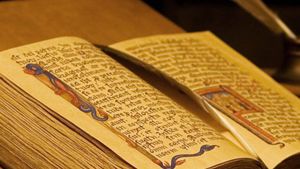


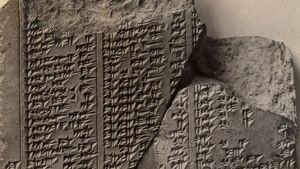

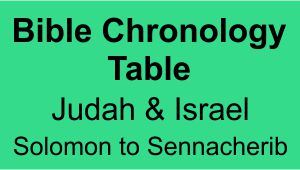
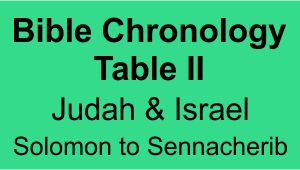

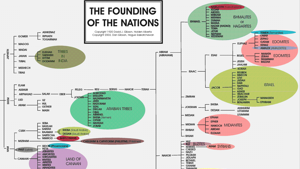

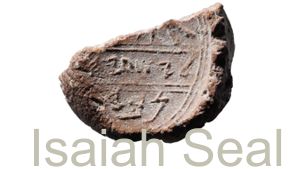
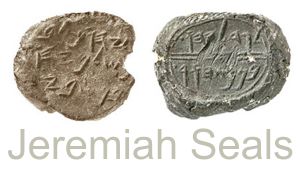




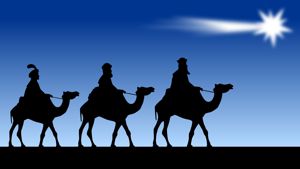


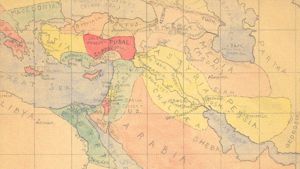


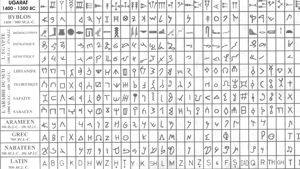
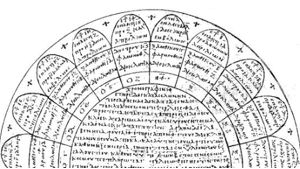
Page Discussion
Membership is required to comment. Membership is free of charge and available to everyone over the age of 16. Just click SignUp, or make a comment below. You will need a user name and a password. The system will automatically send a code to your email address. It should arrive in a few minutes. Enter the code, and you are finished.
Members who post adverts or use inappropriate language or make disrespectful comments will have their membership removed and be barred from the site. By becoming a member you agree to our Terms of Use and our Privacy, Cookies & Ad Policies. Remember that we will never, under any circumstances, sell or give your email address or private information to anyone unless required by law. Please keep your comments on topic. Thanks!